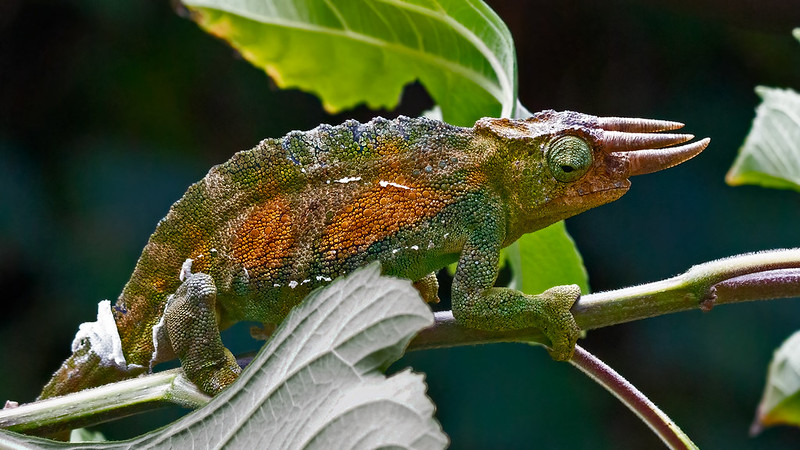Facts about Rwenzori Mountains in Uganda:
The well-known Rwenzori mountains are one of the must-see locations for visitors on safaris in Uganda, the gem of Africa, and are located in western Uganda close to the border with the Democratic Republic of the Congo.
Numerous indigenous wildlife species, like as the fabled three-horned chameleons, sometimes known as Johnston’s chameleons, find refuge in the Rwenzori mountains. Have you ever imagined coming upon such a remarkable attraction? This is feasible in the Rwenzori Mountains, making it worthwhile to experience when on safari in Uganda. Gorilla viewing at Bwindi Impenetrable National Park and Mgahinga National Park is an optional addition.
The three-horned chameleon, also known as Trioceros jacksonii, is a species of the Chameleonidae family that is found in East Africa, including Uganda. The term “Trioceros” is taken from Fredrick John Jackson, the first governor of Kenya and a well-known explorer and ornithologist. It refers to the three horns that mature chameleons have on their heads.
One of the indigenous reptile species of East Africa, they are primarily found in higher elevations of at least 3000 meters above sea level. This is the reason that, among other sites, the majestic Rwenzori mountains’ higher slopes are home to three-horned chameleons.
The three horns on the male three-horned chameleons’ foreheads are an intriguing and noticeable distinction from the other species. These amazing chameleons, like other species of these reptiles, are excellent at hiding thanks to their extraordinary abilities to change color and blend in with their surroundings. The majority of chameleons use their amazing ability to change color to camouflage themselves from predators, particularly hazardous snakes and birds.
They change color to more quickly pursue their prey, which includes small insects, just like other chameleons do. Changes in hue can be used to convey mood to other chameleons and indicate intentions to engage in courtship behavior or even engage in combat with another male.
Numerous three-horned chameleons find refuge in the Rwenzori highlands, and when they are in different environments, they frequently are unable to resist revealing their changing color. They unquestionably change their skin tone to match the surroundings while on brown soil or greenery, and they do the same thing when on greenery. The three-horned chameleons have the following fascinating characteristics:
After a five to six-month gestation period, these reptiles always produce eight to thirty young. In addition to the Eastern Democratic Republic of Congo, Rwanda, and Uganda’s Bwindi Impenetrable, Rwenzori Mountains, and Mgahinga national parks, these rare chameleon species are exclusive to the Albertine Rift Valley region.
They are omnivorous, eating mostly insects like bugs, grasshoppers, small birds, crickets, spiders, and butterflies in addition to snails, millipedes, centipedes, lizards, and small birds. However, they are also prey for snakes and larger birds.
Sadly, Johnston’s Chameleons are typically threatened by humans who destroy their habitats while others keep them in captivity due to the notion that they are extremely magical due to their horns, which poses a serious threat to their survival.
The tongues of three-horned chameleons have special muscles at the tip that enable them to catch their prey. The ability to grasp on to tree trunks while climbing makes their feet different from lizards’ feet. Their remarkable eyeballs can spin 360 degrees, so they can see in all directions even when they are not moving. This provides them with the chance to catch their prey from all sides or even defend themselves against their predators.


Leave a Reply